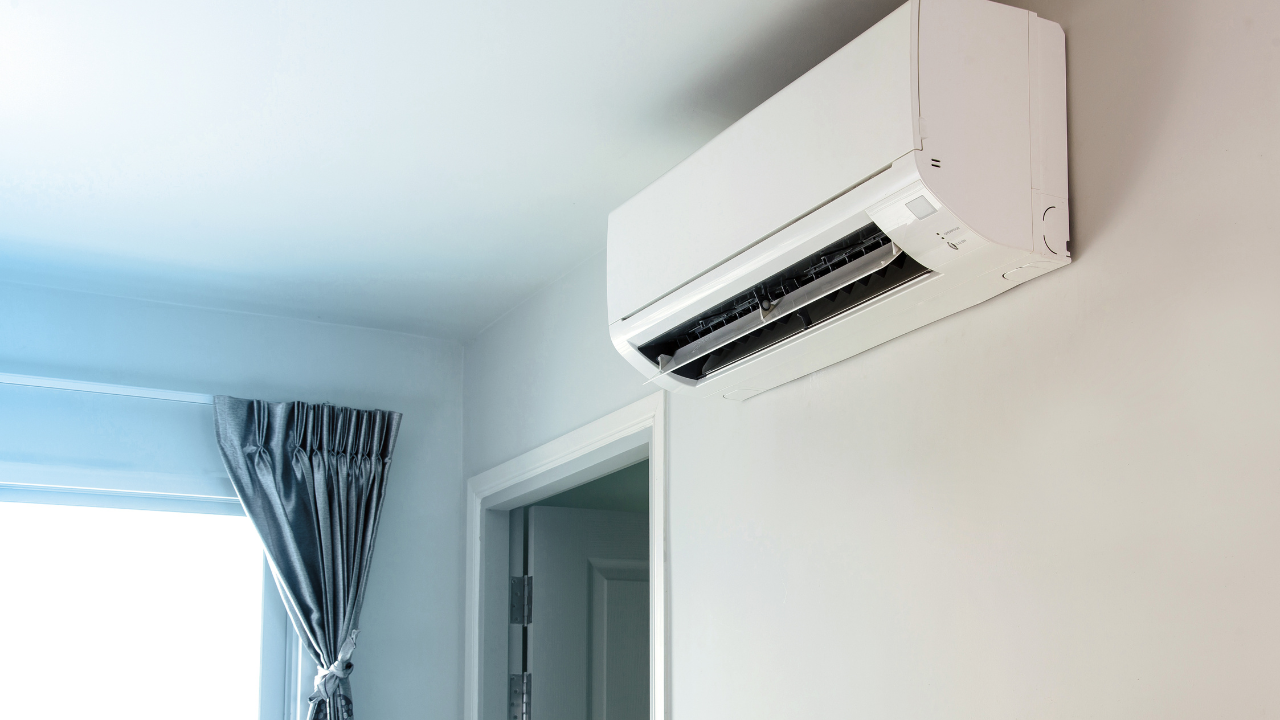Understanding Different Types of Air Conditioners
When selecting an air conditioning system for your home, it is crucial to understand the various types available, each with distinct benefits and limitations. The primary types of air conditioners include central air conditioning systems, window units, portable air conditioners, and ductless mini-split air conditioners.
Central air conditioning systems are designed to cool multiple rooms using a network of ducts. The major advantage of this type is its ability to maintain a consistent temperature throughout the home. However, installation can be costly and may not be feasible in older homes lacking ductwork. Central air systems are ideal for larger homes or those with multiple levels, as they provide efficient and uniform cooling.
Window units are a popular choice for individual rooms and smaller spaces. These compact systems are easy to install and relatively inexpensive, making them accessible for many homeowners. However, window air conditioners often struggle to cool larger areas effectively and may obstruct views or natural light. They are best suited for apartments or single rooms where concentrated cooling is needed.
Portable air conditioners offer the flexibility of mobility, allowing users to move the unit from one room to another as necessary. Despite their convenience, they often have lower energy efficiency and may require venting through a window, which can be cumbersome. Portable units are an excellent option for renters or those seeking temporary cooling solutions.
Ductless mini-split air conditioners represent a more advanced option, featuring an outdoor compressor and indoor air-handling units. These systems provide zoned cooling, enabling homeowners to control the temperature for different areas independently. While installation is more straightforward than central systems and they are energy efficient, the upfront cost can be significant. Ductless systems are particularly beneficial for homes without existing ductwork.
In evaluating these options, it is essential to consider factors such as room size, installation requirements, and budget to determine which air conditioning system best meets your cooling needs.
Assessing Your Home’s Cooling Needs
When it comes to choosing an air conditioner, a critical first step is to accurately assess your home’s cooling needs. This process begins with evaluating the size of the rooms you intend to cool. Larger spaces generally require more cooling power, which is measured in British Thermal Units (BTUs). To determine the required BTUs for a room, you can utilize common calculations that account for the square footage, factoring in other variables such as ceiling height and whether the area is open or closed. Typically, it’s advisable to aim for about 20 BTUs per square foot of living space.
Another important aspect to consider is the quality of insulation in your home. Homes with poor insulation tend to lose cooled air more rapidly, necessitating the use of a more powerful air conditioning unit. Inspect your walls, attic, and areas around windows and doors to identify any gaps or weak spots in insulation that might contribute to cooling inefficiency. Supplementing insulation will not only enhance comfort but also improve the overall performance of your air conditioner.
Local climate plays a significant role in determining your cooling needs as well. In regions with extremely hot summers, you may need to invest in a more robust air conditioning system to maintain indoor comfort. Furthermore, the number and types of windows in your home can affect temperature regulation; for instance, large windows let in more sunlight, increasing heat and thereby requiring more cooling capacity. A home assessment should include identifying how many windows face the sun and their effectiveness in blocking out thermal heat.
By thoroughly evaluating square footage, insulation quality, local climate, and window placement, you can effectively determine the cooling capacity required for your space. This assessment is essential for selecting an air conditioning unit that not only meets your comfort needs but also operates efficiently, ultimately leading to lower energy costs.
Energy Efficiency Ratings Explained
When selecting the ideal air conditioner for your home, understanding energy efficiency ratings is pivotal to optimizing performance while minimizing electricity costs. Two primary measures commonly referred to are the Seasonal Energy Efficiency Ratio (SEER) and the Energy Efficiency Ratio (EER).
SEER is a metric that measures the cooling output of an air conditioner during a typical cooling season, divided by the total energy consumed in watt-hours. A higher SEER rating indicates a more energy-efficient unit. For example, an air conditioner with a SEER rating of 16 is more efficient than one rated at 13. In many regions, minimum SEER ratings are mandated, so it’s essential for homeowners to consider these ratings when comparing models.
On the other hand, the EER measures the cooling efficiency of an air conditioner at a specific outdoor temperature, usually at 95 degrees Fahrenheit. Like SEER, a higher EER rating implies better energy efficiency. This rating is particularly useful for those living in hot climates, as it directly relates to peak performance during high-demand periods.
Energy-efficient air conditioners not only help diminish utility bills but also contribute to a reduced carbon footprint. By conserving energy, these systems lessen the strain on power grids, promoting overall environmental sustainability. Furthermore, many energy-efficient models qualify for rebates and tax incentives, providing additional financial benefits for homeowners.
When interpreting these ratings, look for air conditioning systems that not only meet the minimum efficiency standards but also exceed them. Choosing a model with superior SEER and EER ratings can result in substantial long-term savings, making the initial investment worthwhile. By prioritizing energy efficiency in your air conditioning selection, you’ll undoubtedly enjoy enhanced comfort while achieving lower energy costs over time.
Setting a Budget for Your Air Conditioner
When planning to purchase a new air conditioner, establishing a realistic budget is crucial. The initial cost of the unit itself is only one aspect to consider; expenses related to installation, maintenance, and energy consumption must also be factored into your budget. These components collectively influence the overall affordability of your cooling system.
Firstly, determine the upfront cost of various air conditioning units. Prices can vary significantly based on the type and capacity of the system you choose. Central air conditioning systems, for example, are typically more expensive than window or portable units. In addition to the purchase price, you must consider installation costs, which can include labor and necessary modifications to your home. It is advisable to get quotes from multiple contractors to ensure competitive pricing.
Secondly, ongoing maintenance is an essential part of your budget. Regular servicing of your air conditioner not only prolongs its lifespan but also maintains energy efficiency. This applies to both standard maintenance tasks, such as filter replacement and coil cleaning, and potential repairs that may arise over time. Allocating a portion of your budget for these maintenance activities will help you avoid unexpected expenses later on.
Moreover, energy consumption plays a significant role in long-term costs. Air conditioning units vary in energy efficiency ratings, and choosing a model with a higher Seasonal Energy Efficiency Ratio (SEER) can lead to substantial savings on utility bills over time. While high-efficiency models may have a higher initial cost, the reduction in energy expenses often justifies the investment.
In summary, setting a budget for your air conditioner involves understanding all associated costs, from purchase and installation to maintenance and energy consumption. By carefully evaluating these factors, you can make an informed decision that balances upfront costs with potential long-term savings. This thoughtful approach will ultimately enhance your comfort while ensuring financial prudence.
Features to Consider in an Air Conditioner
Choosing the right air conditioner for your home requires careful consideration of several key features that can greatly impact your comfort and energy efficiency. One of the primary features to assess is the programmable thermostat. This feature allows you to set specific temperatures for different times of the day, optimizing energy consumption and ensuring that your home remains comfortable when you are present, while reducing usage when you are away.
Another important consideration is remote control access. Many modern air conditioners come equipped with Wi-Fi capabilities, allowing you to control the unit from your smartphone or tablet. This feature adds convenience, enabling you to adjust settings while you are outside the home, ensuring that you return to a pleasantly cooled environment.
Air filters also play a crucial role in the functionality of an air conditioner. High-quality filters can significantly improve indoor air quality by trapping dust, pollen, and other allergens. It is advisable to choose a model with easy-to-replace or washable filters, as this ensures that you can maintain optimal performance and cleanliness with minimal effort.
Additionally, noise levels are an essential factor to contemplate when selecting an air conditioning unit. Look for models designed to operate quietly, as this will lead to a more comfortable and peaceful home environment. Many manufacturers provide the decibel rating of their units, which can help you make an informed choice.
Lastly, certain functionalities such as dehumidification and air purification can enhance the overall efficiency of your air conditioning system. Dehumidification helps to reduce humidity levels in your home, making it feel cooler and more comfortable. Air purification features can help eliminate odors and allergens, contributing to a healthier living space. By carefully considering these features, you can select an air conditioner that best suits your needs and enhances your overall comfort.
Understanding Installation Options
Choosing the right installation method for your air conditioner is crucial for ensuring optimal performance and efficiency. There are two primary options: professional installation and do-it-yourself (DIY) installation. Each of these methods has its advantages and considerations that homeowners should take into account.
Professional installation is often recommended for central air conditioning systems, ductless mini-splits, and other complex installations. With the assistance of trained HVAC technicians, homeowners can benefit from expert knowledge regarding system selection, placement, and integration with existing ductwork. Professionals conduct thorough assessments of home layouts and cooling needs, ensuring that the chosen air conditioning unit is appropriately sized. Moreover, licensed installers are familiar with local building codes and regulations, which can significantly mitigate potential legal or safety issues.
On the other hand, DIY installation has become a common option for window units and portable air conditioners. Homeowners with a moderate level of technical skill can manage the installation process; however, several important factors must be considered. The location of the unit is vital, as it needs to be positioned for optimal airflow while avoiding obstructions. Additionally, proper insulation around windows or openings is essential to minimize energy loss. Failure to adequately secure the unit could lead to operational inefficiencies and might even cause physical damage during inclement weather.
Ultimately, when deciding between professional and DIY installation, it is crucial to assess your competence and confidence in performing such tasks. Ensuring the unit operates efficiently also involves understanding the maintenance required and correctly following the manufacturer’s guidelines. A well-installed air conditioner guarantees lasting comfort and helps to maintain energy efficiency, making it a critical component of a well-planned home cooling strategy.
Comparing Brands and Models
Choosing the best air conditioner for your home involves a thorough assessment of various brands and their models. Each brand typically offers unique features, warranties, and levels of reliability that can greatly affect your decision. Among the leading brands in the air conditioning market, Trane, Carrier, and Lennox frequently receive positive accolades for their reliability and performance. Trane’s air conditioners, renowned for their durability, often come with an exceptional warranty period, which adds value for homeowners concerned about long-term maintenance costs.
Carrier is another noteworthy brand, celebrated for its efficient cooling technologies and intelligent systems. Their models frequently include advanced features such as smart thermostats, which can enhance energy efficiency. Customer reviews often praise Carrier units for their quiet operation and capability to maintain steady temperatures within the home, making it a top choice for discerning users.
Lennox, known for its innovative designs, offers premium air conditioning solutions with notable advancements in energy efficiency. The company’s models are designed to integrate seamlessly with smart home systems, providing optimization through usage analytics. Many customers appreciate Lennox for its green technology options, positioning it as an environmentally conscious choice in air conditioning units. Furthermore, warranty options provided by Lennox are competitive, often appealing to budget-conscious consumers looking for reliable long-term performance.
As you compare air conditioner brands, consider factors such as reliability, warranty provisions, and customer feedback. This evaluation will help you understand how well each brand satisfies user expectations, leading to a more informed comparison of models. Innovations in technology and energy savings should also weigh heavily in your decision-making process as they can significantly enhance both comfort and cost efficiency in your home.
Maintenance Tips for Longevity
To ensure that your air conditioner operates efficiently and lasts for many years, routine maintenance is essential. Regular upkeep can prevent minor issues from escalating into major problems, saving both time and money in the long run. It is advisable to follow a structured maintenance regimen that includes specific tasks to enhance the efficiency and lifespan of your air conditioning system.
First and foremost, regularly replacing or cleaning the air filters is crucial. Clogged filters can restrict airflow and cause the system to work harder, leading to increased energy consumption and potential damage. It is recommended to check the filters every month, and replace or clean them as needed, typically every three months during peak usage seasons.
In addition to filters, inspecting the outdoor unit is key to maintaining efficiency. Ensure that it is free from debris, such as leaves and dirt, which can hinder airflow. A clear space around the unit allows proper ventilation and improves performance. Moreover, regularly cleaning the evaporator and condenser coils can enhance heat exchange efficiency, which is vital for optimal cooling.
Regularly checking the ductwork is another important aspect. Leaks or blockages in the duct system can lead to significant energy loss and decrease overall effectiveness. Sealing ducts can help maintain an even temperature throughout your home, ensuring that your air conditioner does not have to work overtime.
Finally, scheduling professional maintenance at least once a year is highly recommended. Certified HVAC technicians can perform detailed inspections, address any potential concerns, and conduct necessary repairs. This proactive approach not only prolongs the lifespan of your system but also guarantees that it operates at peak efficiency, providing optimal comfort for your home.
Making the Final Decision
As you approach the conclusion of your air conditioner selection process, it is crucial to synthesize all the information you have gathered. Having researched various models, assessed their energy efficiency, sizes, and features, you are now in a position to make an informed decision. Evaluating your preferences as well as your specific needs will aid in narrowing down your choices.
Start by establishing a checklist to guide your final decision. This checklist should include key factors such as the size of the air conditioner relative to the area you intend to cool, the energy efficiency rating (EER or SEER), noise levels, and desired features like programmable thermostats or smart technologies. It is also important to consider your budget, including both upfront costs and ongoing energy expenses. These elements should be balanced to ensure functionality aligns with financial feasibility.
Once you have established your checklist, it becomes vital to compare your shortlisted options methodically. Create a comparison chart that denotes the pros and cons of each model, along with their corresponding prices. This visual representation will help streamline your decision-making process and highlight which air conditioners best fit your criteria.
After completing your evaluations and comparisons, reach out to preferred dealers or installation professionals. Gather quotes and inquire about warranties, installation processes, and post-purchase support for service or maintenance. Engaging with knowledgeable professionals can offer insights that may reinforce your choice or highlight considerations you had previously overlooked.
By following this structured approach, you can confidently select the best air conditioner suited to your home, ensuring comfort during warm months while maintaining energy efficiency and reliability. Making a well-informed decision will enhance your overall satisfaction with your purchase.





